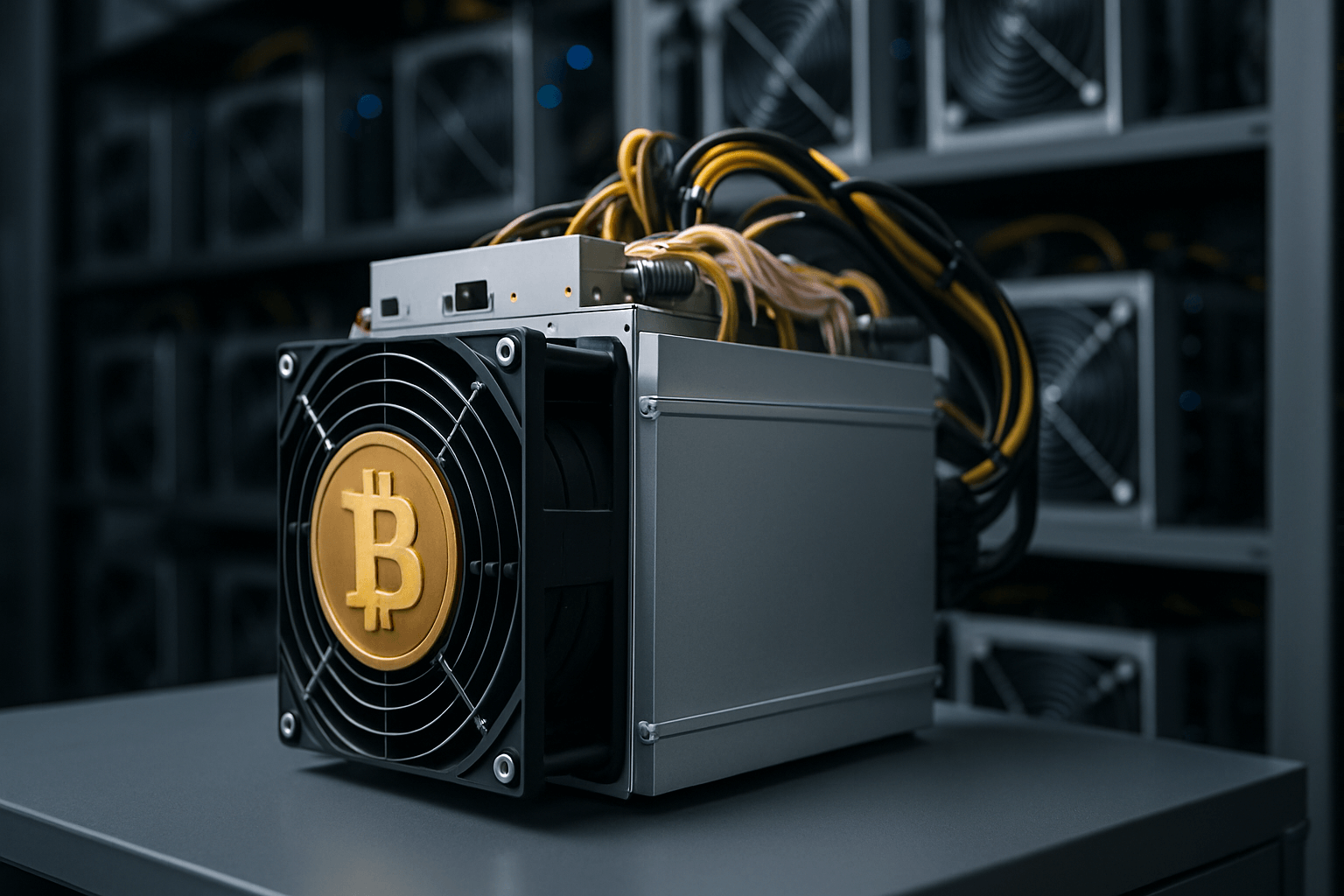Borrowing
What is a Floating Interest Rate in DeFi?
December 07, 2023
Borrowing
December 07, 2023

Most DeFi interest rates are 'floating.' Find out what this means and how it affects your loan below.
If you've spent any amount of time exploring decentralized finance, (DeFi) loans, you may have noticed that it's not uncommon for DeFi interest rates to fluctuate constantly. These fluctuating rates are known as floating interest rates.
So what is a floating interest rate? A floating interest rate is a rate that changes periodically based on market conditions. It is a common feature of DeFi lending protocols and lets users borrow and lend crypto assets using real-time rates that reflect the current state of the market.
In this article, we will take a deep look at floating interest rates, how they differ from fixed interest rates and variable interest rates offered by traditional financial institutions, as well as how to analyze the current floating interest rates for loans offered by various protocols.
A floating interest rate is sometimes also referred to as a variable interest rate, but the terms tend to mean different things in DeFi vs. traditional finance.
A variable interest rate in Traditional Finance is an interest rate that is based on a standard benchmark rate or index, such as the Fed Prime Rate. Many credit card companies set their interest rates based on the Prime Rate which generally means that the rate cardholders pay increases or decreases substantially when the Prime Rate changes. By using a common reference rate, many traditional lenders offer the same range of market rates to borrowers. Additionally, there are laws that prevent traditional lenders from exceeding a maximum interest rate in most cases.
A floating interest rate in DeFi, on the other hand, is an interest rate that changes in real-time according to a predefined formula. These rates are normally based on supply and demand, so that as demand to borrow an asset increases, so does the interest rate. There are generally no maximum interest rates in DeFi, so the market is the ultimate arbiter of how much interest borrowers have to pay, even after they take out their loans.
A fixed interest rate, as the name suggests, offers borrowers a fixed, unchanging interest rate for the duration of the entire loan term. This key feature sets these loans apart from floating-rate loans where interest rates may vary over the lifetime of the loan. A fixed rate loan offers more stability since the borrower will always know the rate. Floating interest rates, on the other hand, can help borrowers save money in instances where rates drop due to favorable market conditions. Of course, the opposite can occur with floating interest rates, and market conditions may drive interest rates higher.
Most DeFi lending protocols offer loans with floating interest rates. By changing the interest rates dynamically based on market conditions, protocols can incentivize users to deposit or borrow more or less of certain assets, thus balancing the liquidity and utilization of each pool in real time.
For example, if there is a high demand for borrowing an asset like USDC, the protocol increases the borrowing interest rate for USDC to encourage more lenders to deposit USDC and earn returns. Conversely, if there is a low demand for borrowing UDSC, the protocol lowers the borrowing interest rate for USDC to attract more borrowers to take out loans in USDC.
In essence, DeFi protocols use floating interest rates for several reasons:
Competitive Loan Interest Rates: By offering rates that mirror the broader market in real time, DeFi protocols can give users more competitive rates for both borrowing and lending.
Market Responsiveness: Floating interest rates enable DeFi platforms to adjust their rates rapidly in response to market dynamics. This responsiveness ensures that the current market rate for borrowing assets aligns with current market conditions, enhancing the efficiency of the lending and borrowing ecosystem.
Risk Mitigation: DeFi is characterized by the volatility of crypto assets used as collateral. Floating rates allow protocols to adapt to fluctuations in collateral values, ensuring loan solvency even as asset prices fluctuate.
Each DeFi lending protocol has its own algorithm or mechanism for determining the interest rates for each asset.
Some protocols use a simple formula based on the utilization ratio of each asset, which is the ratio of borrowed funds to total available funds.
Other protocols use more complex formulas that take into account factors like market volatility, liquidity, governance parameters, and more.
The floating interest rates in DeFi usually depend on a combination of the following factors:
Market Conditions: The most important factor that affects the floating interest rates is how much people want to borrow and lend assets in DeFi. When there are more people who want to borrow rather than lend, interest rates go up, and when more people want to lend than borrow, interest rates go down.
Protocol Governance: Many DeFi platforms have governance tokens that grant users the ability to vote on protocol parameters like interest rates. These decentralized governance mechanisms allow the community to have a say in determining the rates.
Risk Parameters: DeFi protocols incorporate risk parameters such as loan-to-value (LTV) ratios and liquidation thresholds, which can affect interest rates.
Economic Events: Major economic events such as market crashes or significant asset price movements can trigger changes in interest rates to maintain stability and manage risk.
Locating the current floating interest rates for DeFi protocols like Aave and Compound is vital for borrowers and lenders alike.
Given that they can fluctuate frequently, it’s important to know how to check on the lastest rates:
Official Protocol Websites: Most DeFi protocols maintain official websites where you can find real-time data on interest rates, collateral requirements, and other relevant information. Aave and Compound, for instance, provide rate data on their respective websites.
Lending Platform Aggregators: Lending platform aggregators group together data from various DeFi protocols, making it easy to compare rates, collateral requirements, and other relevant data in one place. One such platform is Rocko. Rocko was built to simplify the borrowing and loan management process in DeFi.
Rocko plays a pivotal role in streamlining the DeFi borrowing experience, with easy comparison tools for the latest interest rates and options to borrow in USD and USDC. Here's how Rocko can benefit borrowers:
Rate Comparison: Rocko allows users to compare current and historical interest rates from various DeFi lending protocols.
Email and Text Alerts: Rocko users can set up customizable email and text alerts to receive notifications if their loan is at risk of being liquidated.
User-Friendly Interface: Rocko offers a user-friendly interface that makes borrowing USD and USDC simple for both beginners and experienced DeFi users.
Floating interest rates are a dynamic and responsive mechanism found in most DeFi lending and borrowing protocols. Borrowers can benefit by understanding which interest rate is best for them when taking out a new loan. Platforms like Rocko simplify the entire loan process and provide insight into current and historical interest rates.
Rocko is a new platform that enables crypto owners to easily and securely borrow from popular DeFi protocols like Aave, Compound, and Morpho and get funds in minutes — no experience needed! Use the loan to purchase real estate, pay down higher-rate debt, make everyday purchases, and much more.
Rocko also provides a loan management dashboard and tools like text and email alerts to help manage your loan and collateral. The Rocko team consists of experienced crypto enthusiasts who are ready to help you with any questions you may have. You can join the Rocko Discord server, follow our Twitter account, or visit our resource center to learn more about DeFi borrowing.
Sign up for Rocko and get a loan today!
Rocko does not guarantee the reliability of the Site content and shall not be held liable for any errors, omissions, or inaccuracies. The opinions and views expressed in any articles on rocko.co are solely those of the author(s) and do not reflect the opinions of Rocko. The information provided on the Site is for informational purposes only, and it does not constitute an endorsement of any of the products and services discussed or investment, financial, or trading advice. A qualified professional should be consulted prior to making financial decisions.

Rocko How-tos
Lock In Your Rate: How Kairos Swap Brings Fixed-Rate Lending to DeFi If you've ever borrowed against your crypto on Aave, Morpho, or similar…
September 15, 2025

Crypto & DeFi
Why Borrow Against Staked ETH? Liquid-staking tokens (LSTs) such as stETH, wstETH, cbETH and rETH let you keep earning staking rewards while…
June 17, 2025

Crypto & DeFi
Bitcoin Mining Loans: How to Fund Your Mining Business Bitcoin mining is the backbone of the Bitcoin network—a decentralized process where…
May 07, 2025